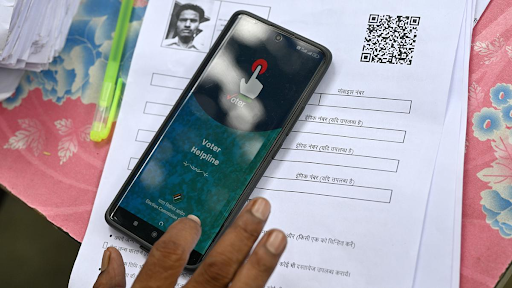





Copyright infringement not intended
Picture Courtesy: https://businessindia.co/magazine/making-of-white-revolution-20
The Union Home and Cooperation Minister Amit Shah inaugurated the White Revolution 2.0 to improve the dairy sector, empower women, and combat malnutrition.
The original White Revolution, also known as Operation Flood, started in the 1960s and 1970s and made India the world's largest milk producer. The White Revolution 2.0 builds on this success.
The National Dairy Development Board (NDDB) and the well-known Amul brand supported the White Revolution that increased milk production and improved farmer livelihoods.
White Revolution 2.0 aims to modernise and broaden the cooperative framework while promoting the socioeconomic empowerment of women participating in milk procurement and production.
To officially acknowledge and involve women who work in the dairy industry.
To promote financial independence by guaranteeing that the proceeds from the procurement of milk are immediately transferred into the bank accounts of women.
To Increase daily milk procurement from 660 lakh litres to 1,000 lakh litres.
To enhance local cooperative institutions and increase community involvement and production capability.
To boost local milk production by improving breeding processes, animal health, and nutrition, as well as implementing contemporary dairy farming methods.
To improve dairy farm infrastructure, such as milk collection centres, cold storage facilities, and transportation networks. This guarantees that milk and dairy products are properly collected, processed, and distributed.
To Improve milk production quality and quantity to increase dairy exports to increase dairy farmers' incomes.
The initiative promotes the development and strengthening of two lakh new Multipurpose Primary Agriculture Cooperative Societies (MPACS), dairy cooperatives, and fishing cooperatives to provide better support and resources to farmers.
To improve farmers' financial inclusion and access to banking services, RuPay Kisan Credit Cards for dairy farmers will be implemented nationwide, and micro-ATMs will be installed in dairy cooperative societies.
The government has issued Standard Operating Procedures (SOP) for computerising 67,930 Primary Agriculture Credit Societies (PACS) to streamline procedures and increase efficiency in the cooperative sector.
Dairy Sector in IndiaIndian Dairy Sector contributes to nearly 5% of GDP and directly employs over 8 crore farmers. India contributes nearly 25% to the world's total milk output. According to the Food Outlook June 2023, the availability of milk per capita in India is 459 grammes per day, which is significantly more than the global average of 322 grammes per day. |
The initiative aims to improve dairy infrastructure, but implementing these projects might be difficult. The program's success depends on ensuring that infrastructure is developed in a timely and effective manner.
Empowering women farmers and increasing local milk production requires significant training and capacity-building initiatives. Farmers must receive proper training in modern dairy farming techniques and best practices.
Introducing RuPay Kisan Credit Cards and micro-ATMs is an encouraging step, but ensuring that all farmers have access to these services remains challenging. Efforts must be made to reach rural and underserved regions.
It is critical to ensure the long-term viability of expanded dairy output and exports. This includes using environmentally friendly procedures and ensuring the health and well-being of dairy cows.
The Rashtriya Gokul Mission was launched in 2014 to promote and preserve indigenous bovine breeds scientifically and comprehensively.
The Nationwide Artificial Insemination Programme (NAIP) was started to increase artificial insemination coverage from 30% to 70% while also providing free artificial insemination services to farmers' doorsteps.
Sex-sorted semen production has been implemented in the country to create only female calves with up to 90% accuracy.
The National Programme for Dairy Development (NPDD) was started in 2014 to develop/strengthen infrastructure for quality milk production, procurement, processing, and marketing of milk and milk products through the State Implementing Agency (SIA).
The Livestock Health and Disease Control Programme (LHDCP) is a Central Sector Scheme that provides financial assistance to State Governments and Union Territories. Vaccination against Foot and Mouth Disease (FMD), Brucellosis, and classical swine fever (CSF), Assistance to States for Control of Animal Disease (ASCAD) for control of state-prioritized economically important exotic, emergent, and zoonotic animal diseases.
Cattle and dairy producers can now access institutionalised credit facilities through the KISAN Credit Card (KCC).
The Animal Husbandry Infrastructure Development Fund (AHIDF) was established under the AtmaNirbhar Bharat Abhiyan stimulus package with an initial capital of Rs. 15000 crore.
The National Livestock Mission was launched to promote sustainable and continuous growth in the livestock sector. Its focus is on job creation, entrepreneurship development, increased per-animal productivity, and increased production of meat, goat milk, egg, and wool.
Must Read Articles:
Source:
|
PRACTICE QUESTION Q.Critically analyze the significance of cooperatives in the Indian Dairy Sector. Provide examples of successful cooperatives and their impact on local economies. (150 Words) |








© 2025 iasgyan. All right reserved